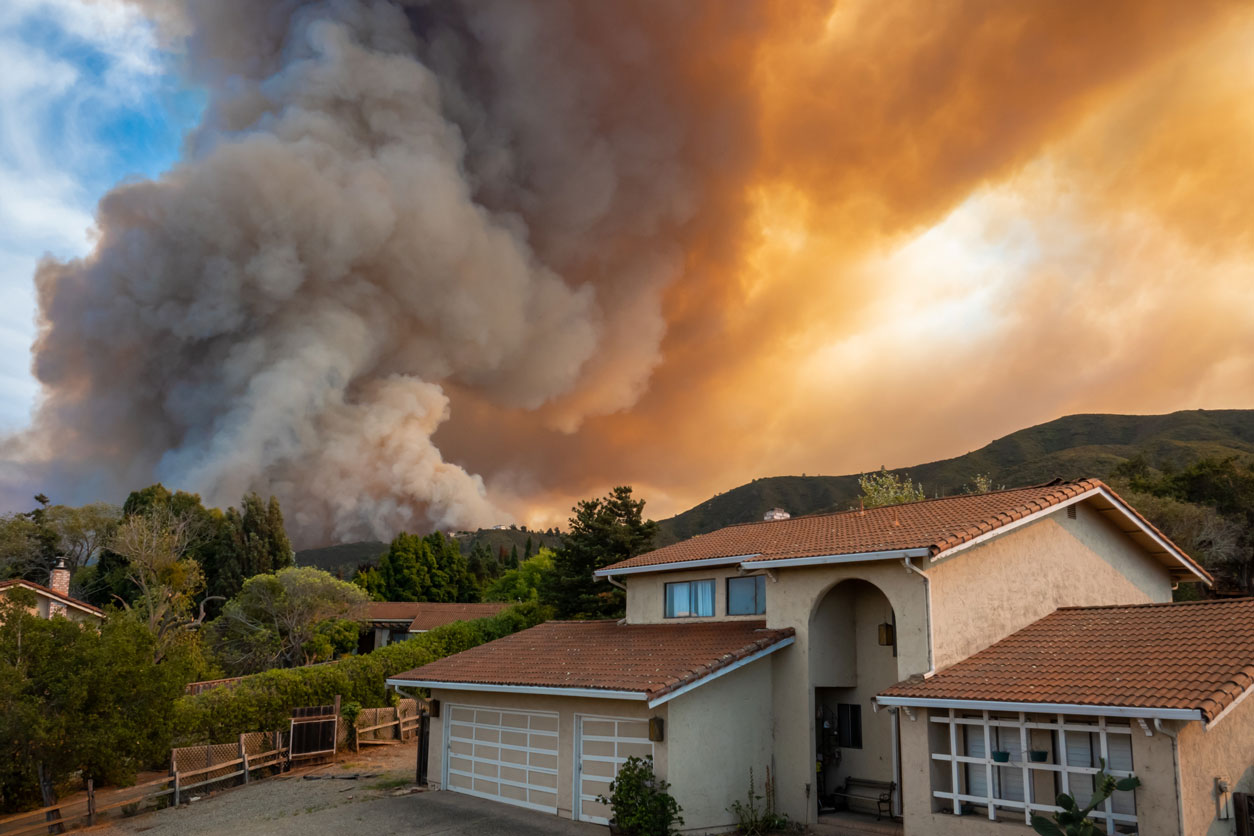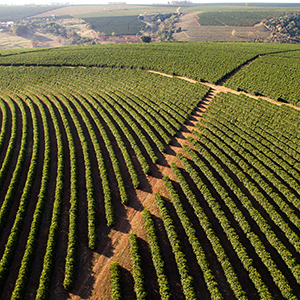During a March 8 webinar sponsored by the NIEHS Mixtures Cross-Divisional Group, toxicologist Julia Rager, Ph.D., from the University of North Carolina at Chapel Hill (UNC), discussed her efforts to model and sample toxic exposures from wildfire smoke.
 Wildfires can lead to inhalation of complex mixtures of chemicals, negatively affecting the health of firefighters and nearby residents. (Photo courtesy of David A. Litman / Shutterstock.com)
Wildfires can lead to inhalation of complex mixtures of chemicals, negatively affecting the health of firefighters and nearby residents. (Photo courtesy of David A. Litman / Shutterstock.com)“If you’re attending this webinar, I’m sure you are aware that complex environmental exposures from a variety of sources can adversely affect our health,” said Mark Miller, Ph.D., from the institute’s Division of the National Toxicology Program (DNTP), who introduced Rager.
“Developing a better understanding of the exposome, mixtures, and combined exposures has been a major goal of NIEHS for many years,” he added. “Although we have made significant advances, there is still much we don't know, and that's why we're all here today.”
Wildfires create complex exposures
 “Wildfires are growing both in prevalence and intensity,” Rager said. “Worldwide, every year, they're contributing to poor air quality.” (Photo courtesy of Julia Rager)
“Wildfires are growing both in prevalence and intensity,” Rager said. “Worldwide, every year, they're contributing to poor air quality.” (Photo courtesy of Julia Rager)“One of the most interesting mixtures to study is wildfire inhalation exposures,” Rager said. “It's so variable and complex, making it a perfect fit for bioinformatics analyses.”
She combines computer modeling with cell- and animal-based testing to study the complex exposure conditions of wildfires. Rager aims to accomplish the following.
- Identify chemical drivers of wildfire-induced toxicity.
- Pinpoint wildfire-relevant exposure conditions that are sufficiently similar to merit study or regulation as a group.
- Describe the underlying biological mechanisms of wildfire-associated health effects, including the role of toxicological messengers called extracellular vesicles (EVs).
Rager also described training materials she has developed at the NIEHS-supported UNC Superfund Research Program. For example, her lab built a publicly available, online data science training toolkit called inTelligence And Machine lEarning (TAME). That resource involves a series of educational modules that help students apply computational approaches to research on environmental exposures.
Understanding toxicity
“Wildfire exposure evaluations can be difficult because our studies are usually retroactive in nature,” Rager said. “With simulations, it's difficult to approximate the chemistry and particulate concentrations that occur in nature.”
She referenced research by U.S. Environmental Protection Agency (EPA) scientists that influenced her work. They used specialized equipment to collect smoke samples from various types of biomass fuel common to wildfires around the world — including eucalyptus, peat, pine, pine needles, and red oak — during different combustion phases, such as smoldering versus flaming.
Rager teamed up with the EPA researchers, using banked tissue samples from exposed mice to determine which chemicals within the complex smoke mixtures produced by various biomass burn scenarios drive cardiopulmonary toxicity.
“We incorporated a suite of computational mixtures approaches to identify groups of chemicals associated with different biological responses,” she said.
The researchers examined biomarkers, immune cell counts, lung injury markers, and other data. Rager also looked for genetic markers — similar gene expressions across different samples — in response to wildfire exposure.
In addition, her lab has used a method called Sufficient Similarity Analysis, whereby groups of exposure conditions are assessed for chemical and biological likeness.
“We identified modules of co-occurring chemical clusters across different mass burn scenarios,” she said. “We think those modules contain the worst actors present in wildfire exposures.”
Cardiovascular outcomes
In attempting to understand the body’s reaction to smoke inhalation, Rager recently looked at a key component of molecular communication called extracellular vesicles (EVs).
“Those are particles that are released from parent cells, [and] they contain and transport molecules from the parent cells to potential target cells,” she said. “We're postulating that wildfire exposures cause hypoxia and cell stress in the lung, leading to the release of EVs that impact the heart and cardiovascular outcomes.”
Informing future research
“It's impossible to test every chemical that occurs in wildfire events,” Rager told attendees. “Leveraging [computer-based] mixture modeling techniques has great utility towards decreasing reliance on animal testing and informing future research,” she said.
“And by identifying major toxicity drivers within different biomass sources, we can improve risk characterizations within complex exposures,” added Rager. “This will help identify which geographic regions may be more at risk to wildfire smoke.”
Citations:
Rager JE, Clark J, Eaves LA, Avula V, Niehoff NM, Kim YH, Jaspers I, Gilmour MI. 2021. Mixtures modeling identifies chemical inducers versus repressors of toxicity associated with wildfire smoke. Sci Total Environ 25(775):145759.
Carberry CK, Keshava D, Payton A, Smith GJ, Rager JE. 2022. Approaches to incorporate extracellular vesicles into exposure science, toxicology, and public health research. J Expo Sci Environ Epidemiol; doi:10.1038/s41370-022-00417-w [Online 25 February 2022].
(John Yewell is a contract writer for the NIEHS Office of Communications and Public Liaison.)









